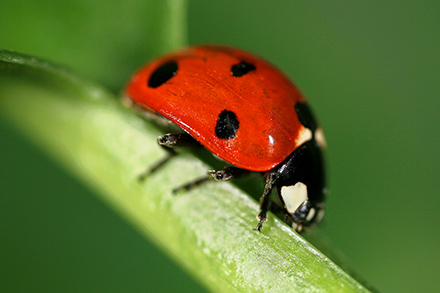ARS Works to Establish Lady Beetles in Hawaii
Lady beetles are synonymous with sunshine and summertime, buzzing around tall green grass and plants from small gardens to large meadows. Perhaps the most familiar lady beetle is the iconic red bug with black spots, but there are hundreds of species, both native and non-native to the United States.
Lady beetles prey on a wide variety of aphids, or insect pests, making them essential to biological pest control. It’s for this reason that ARS scientists continually work to collect, research, and identify the most beneficial species of lady beetles to help curb the use of pesticides.

While many lady beetles are native to all 50 states, when it comes to crossing the Pacific to the islands of Hawaii, there are no lady beetles inherent to the tropical ecosystem.
“There is no evidence, at this point, that any of the lady beetles in Hawaii are native, those that exist have all been brought in from other places in the world,” said Louis Hesler, entomologist and lead scientist at the North Central Research Laboratory for Integrated Cropping System Research in Brookings, SD.
Presently, ARS researchers have collected and identified 50 lady beetles that are beneficial, serving as champions of Hawaiian biological pest control.
Recently, Hesler’s team received two apparently new kinds of lady beetles from collaborators in Hawaii. The team is currently working to research and identify whether these two kinds will also benefit the islands.
“We want to inform the pest management practitioners, horticulturalists, and the people that are involved in production agriculture and landscape architecture to give them a handle on what biological resources are available for pest control,” Hesler said. “We’re trying to develop a list of all species that are established, or confirmed, in Hawaii.
“There’s been a lot of beneficial insects, like lady beetles, that have been introduced in Hawaii but not all have been proven within the environment,” Hesler added. “So, it’s important we document those lady beetles that are fully established.” – Tami Terella-Faram, ARS Office of Communications
You May Also Like:



